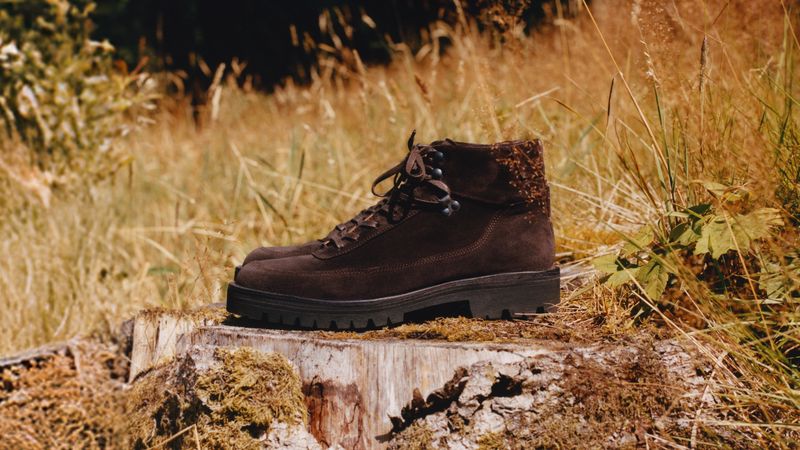THE JOURNAL

Start at the bottom and work your way up. No, we’re not giving out career advice or describing the property ladder – it’s Style 101. It doesn’t matter where you’re heading, paying extra attention to your footwear is crucial as it can have a real impact on how your day pans out. And one of the most important items on your shoe rack? Your hiking boots.
Going out into the wild, or even just the park for a dog walk, requires footwear that protects. Keeping you warm and dry is the objective. A high-top boot also offers ankle protection. As such, the hiking boot is a very pragmatic product, up there with three-layer Gore-Tex jackets and lightweight Polartec fleeces. But just as with those garments, there’s also an aesthetic aspect to the boot that cannot be ignored.
While all boots look different depending on the brand and style, there are still a few design elements that have come to define what we expect from a hiking boot. As mentioned, height is needed and the high top is, archetypically, kept in place by multicoloured laces using metal eyelets and hooks. At the business end of the boot, the commando sole offers grip, balance and control.


But that’s not all to look for. “The main request from the community today – aside from durability, comfort and weather protection – is the lightness of the boots,” says Alexander Zabelin, editor-in-chief of Techunter Magazine. “The current pace of life gives us the desire to minimise effort while maximising efficiency and productivity.”
Thanks to the hybrid lifestyles that we now lead, the modern hiking boot can’t just be designed for mountain hikes and forest treks. We now require our apparel and footwear to be multifunctional and suitable for everyday urban life, as well as adventures in nature. Consequently, we’ve seen brands such as ROA and Diemme create boots using more luxurious upper materials – as opposed to purely technical – such as full-grain leather and hairy suede. Swedish brand MORJAS also offers sleek hiking boots alongside its classic loafers and Oxford shoes.
“The boot is no longer an outsider, even though that’s where it all started”
It’s through these trend-sensitive brands that the humble hiking boot has made it to the very front line of fashion. The boot is no longer an outsider, even though that’s where it all started. Today, it’s present on catwalks in Milan and lookbook shoots in Tokyo.
“To me, it’s the same circulation of trends and the re-interpretation of usage as with postman shoes and old military jackets,” Zabelin says. “They were very advanced and relevant in their time, and they remain cool-looking products that now belong to the legacy of menswear, getting a new lease of life through the style of new generations.”


Diemme is worth singling out for extra attention. Originating from the mountainous Dolomite region of northeastern Italy (always a good start), the brand was founded in 1992 by brothers, Dennis and Maico Signor. To this day, each boot is handmade in a small factory in Onè di Fonte in the Veneto area. Inspired by heritage hiking boots in terms of their purpose, Diemme’s iterations are made from luxe materials mixed with modern technology – all in a subtle and tasteful colour palette. “I like their sleek and architectural silhouettes that blend into the environment,” Zabelin says of the boots.
In terms of how to wear a hiking boot – and where it fits into your hybrid wardrobe – the boot’s versatility is arguably its strongest asset. Depending on the whistles and bells attached to them, they can be dressed both up and down. From a purely stylistic point of view, as boots tend to be quite wide across the foot, they work well with wider trousers and jeans. Even better, if there are drawstring cuffs on the trousers to taper off the legs so they sit on top of the boot.
Zabelin has the final words on the hiking boot, prophesying its longevity in a fad-frenzied environment: “They will live on because they are made to be durable, crafted to the highest standards for the harshest outdoor conditions.”